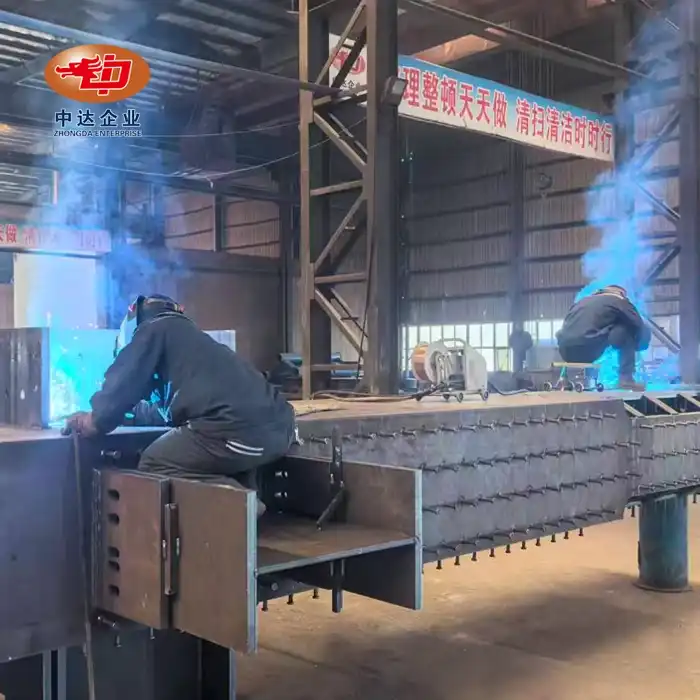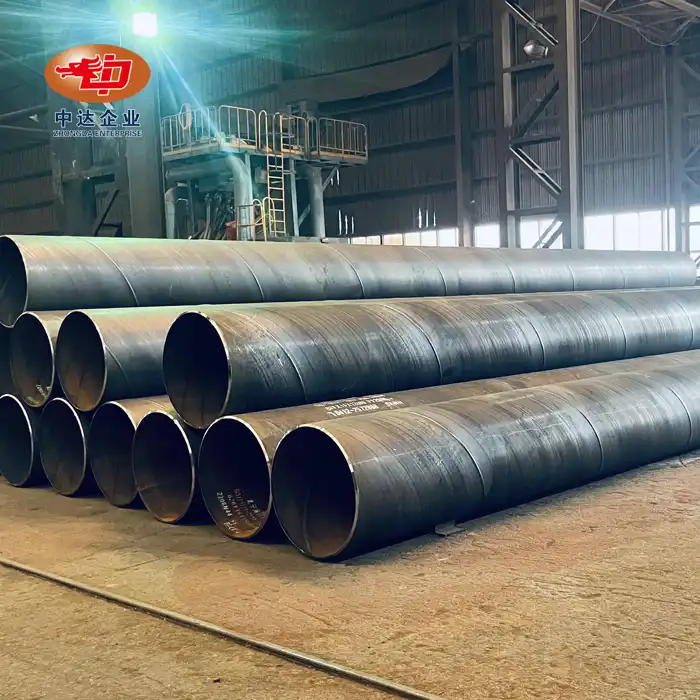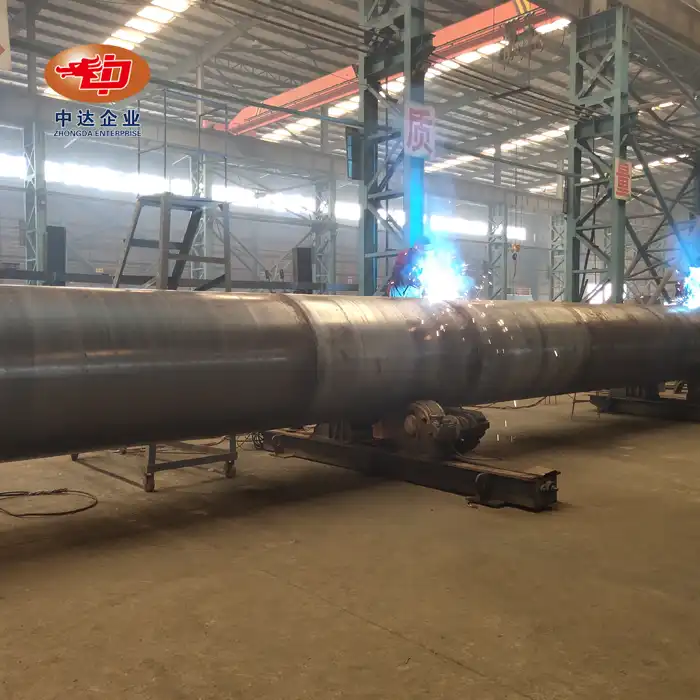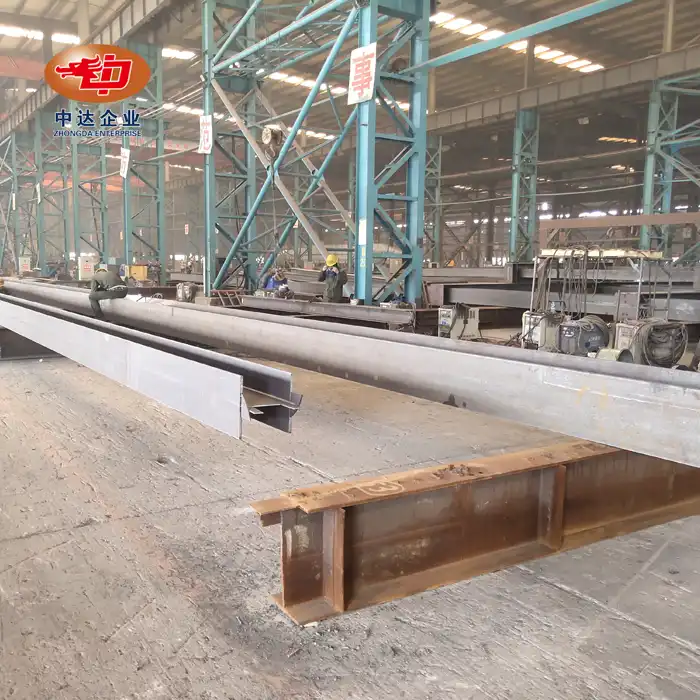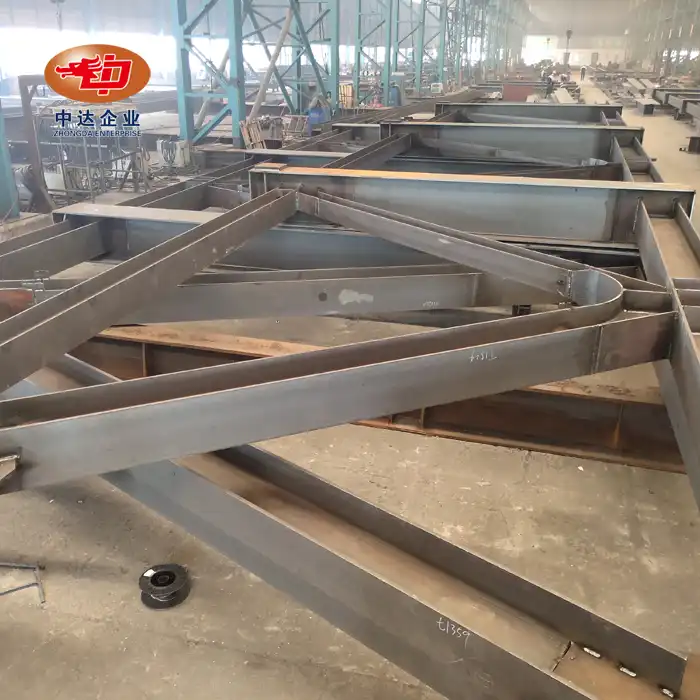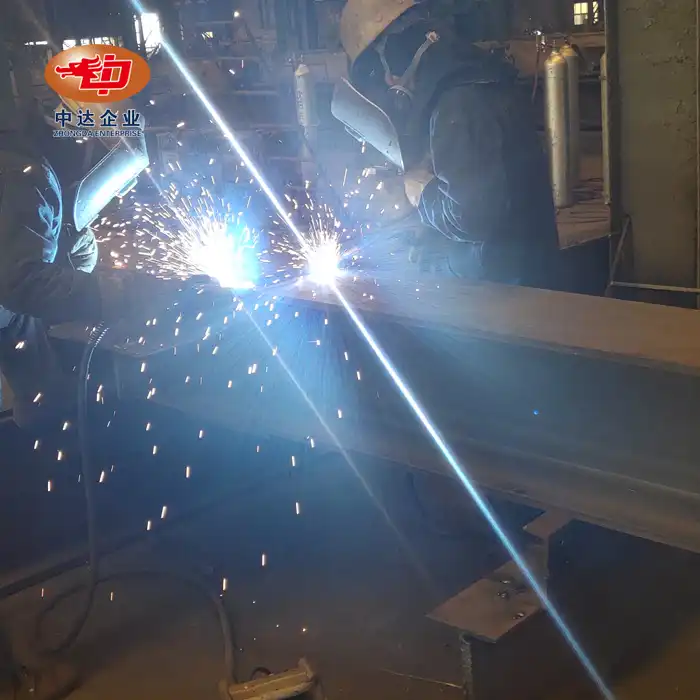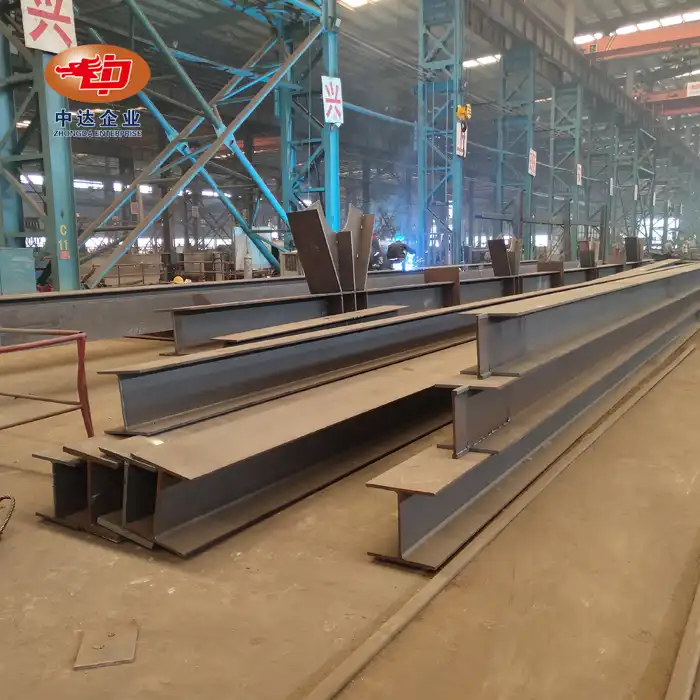Understanding the Fundamentals of Steel Concrete Composite Beams
Principles of Composite Action
Composite beams work by leveraging the strengths of both steel and concrete. The steel section primarily resists tensile and shear forces, while the concrete slab handles compression. This synergy allows for greater load-bearing capacity and reduced beam depth compared to traditional designs. Understanding this interaction is crucial for effective design.
Benefits of Composite Construction
Composite beams offer numerous advantages, including increased span capabilities, improved fire resistance, and enhanced structural efficiency. They can significantly reduce overall building weight and floor depth, leading to cost savings in foundations and increased usable space. Our composite beams at Zhongda Steel have demonstrated these benefits in projects like the 18,000-ton Shenyang Dongta Cross-Hunhe River Bridge.
Material Selection Criteria
Choosing the right materials is critical for optimal performance. We recommend high-strength Q345D steel for its superior load-bearing capacity and C50 grade concrete for enhanced durability and fire resistance in steel concrete composite beams. The selection should consider factors such as strength requirements, environmental conditions, and long-term performance needs.
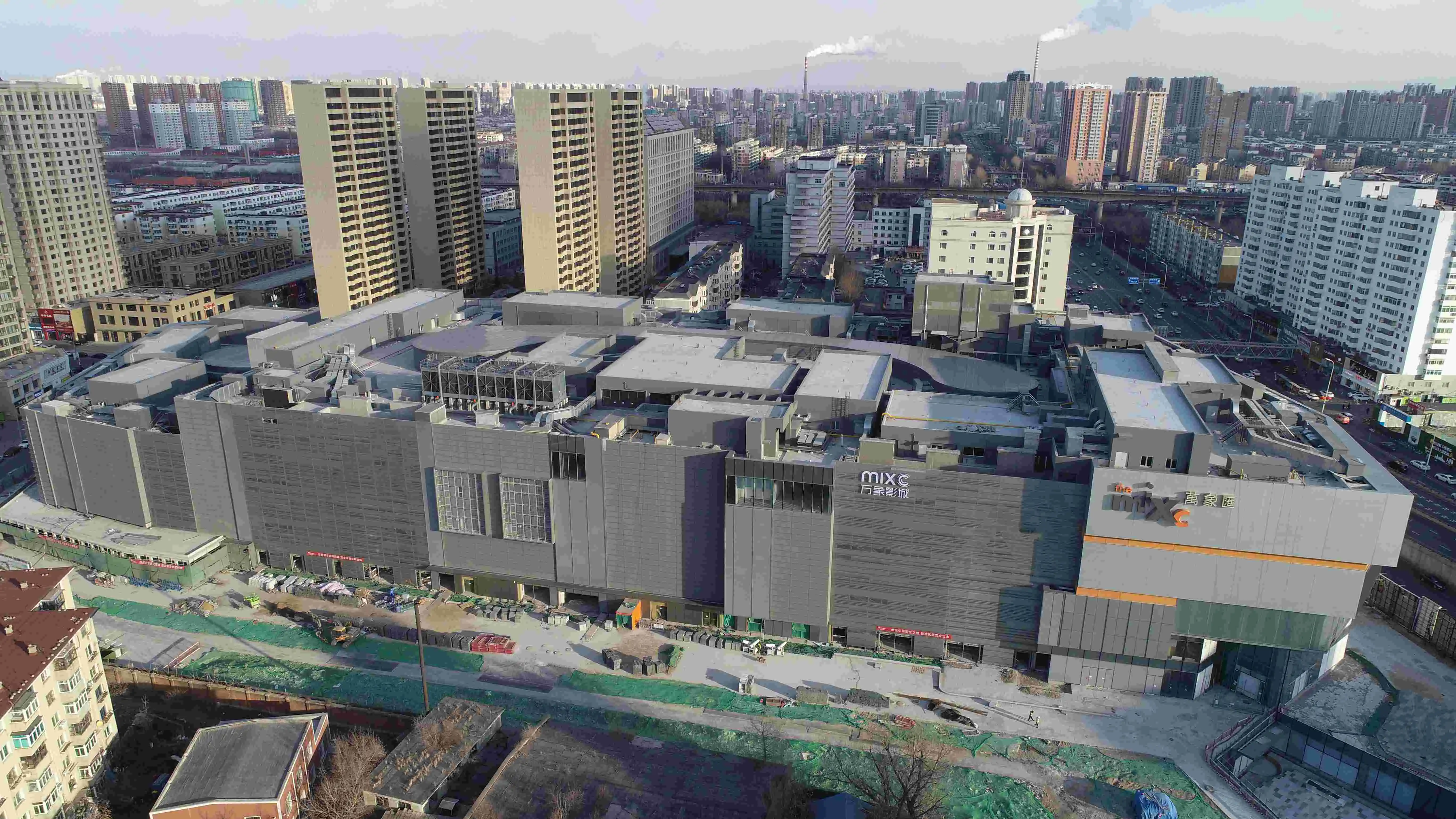
Key Design Considerations for Steel Concrete Composite Beams
Load Analysis and Span Determination
Accurate load analysis is the cornerstone of designing steel concrete composite beams. This process entails calculating all relevant forces, including dead loads, live loads, and specialized operational loads based on the building's function. Span determination is then addressed, taking into account structural layout, architectural constraints, and functional requirements. Zhongda Steel's expertise allows optimization for typical spans of 30 to 60 meters, while specialized projects can achieve up to 120 meters. Thoughtful load and span analysis ensures structural stability, efficiency, and safety under all anticipated service conditions.
Shear Connector Design
Shear connectors play a critical role in achieving composite action between the steel beam and concrete slab in steel concrete composite beams. Zhongda Steel employs Φ19×150mm shear studs with a minimum shear capacity of 150kN to effectively transfer horizontal forces and prevent slip at the interface. The design carefully calculates the number and spacing of connectors based on beam length, expected loads, and performance requirements. Proper shear connector implementation ensures that steel and concrete act in unison, enhancing load distribution, reducing deflection, and maintaining long-term structural integrity under service conditions.
Seismic Considerations
In earthquake-prone regions, seismic performance is a vital factor in composite beam design. Zhongda Steel's beams have undergone rigorous 8-degree earthquake simulation testing and adhere to Caltrans standards for seismic resilience. This involves meticulous detailing of connections, enhanced ductility measures, and reinforcement strategies to accommodate lateral forces. By integrating these considerations, our composite beams maintain structural stability and energy dissipation capacity during seismic events. This ensures safety for occupants, minimizes damage, and provides durable performance in regions with high seismic risk.

Advanced Design Techniques and Quality Assurance
Finite Element Analysis
At Zhongda Steel, we utilize advanced finite element analysis (FEA) to ensure optimal beam design and structural performance. This method allows for a detailed examination of stress distribution, deformation, and potential weak points under various loading conditions. By simulating real-world scenarios, including complex geometries and dynamic forces, FEA enables us to refine designs before fabrication. This proactive approach reduces material waste, enhances safety, and ensures that each composite beam meets stringent engineering standards, providing reliable and long-lasting structural solutions for diverse industrial and construction projects.
Durability and Corrosion Protection
Ensuring long-term durability is central to our steel concrete composite beam design philosophy. We provide a range of corrosion protection options, including galvanizing and epoxy coatings, to safeguard steel components against harsh environmental conditions. Our proprietary -60°C Weathering Steel Anti-corrosion Technology delivers exceptional resistance to moisture, chemical exposure, and extreme temperatures. Proven in demanding applications such as Australian mining crushing stations, these protective measures extend the lifespan of the beams, reduce maintenance requirements, and maintain structural integrity over decades, even in challenging operational environments.
Quality Control and Testing
Zhongda Steel places rigorous emphasis on quality control throughout the design, fabrication, and delivery of composite beams. Our ISO 9001-certified quality management system ensures consistent standards and meticulous oversight. Comprehensive testing protocols, including ultrasonic testing (UT) according to EN1090-2 EXC3, verify structural integrity, weld quality, and load-bearing performance. Each beam undergoes thorough inspections to confirm compliance with design specifications, guaranteeing that clients receive highly reliable, durable, and precise steel components suitable for critical construction and industrial applications worldwide.
Conclusion
Designing steel concrete composite beams requires a multifaceted approach, balancing structural efficiency, cost-effectiveness, and long-term performance. At Shenyang Zhongda Steel Structure Engineering Co., Ltd., we bring together cutting-edge technology, extensive experience, and rigorous quality control to deliver superior composite beam solutions. Our proven track record in projects like the Jingha Expressway expansion showcases our ability to meet diverse design challenges efficiently and effectively.
FAQs
What is the typical span range for steel concrete composite beams?
Standard spans range from 30 to 60 meters, with capabilities up to 120 meters for special designs.
How long does it take to manufacture and deliver a composite beam?
Our standard production time is 45 days, including a 28-day concrete curing period. We offer expedited options for urgent orders, with delivery possible in as little as 35 days.
Are your composite beams suitable for seismic zones?
Yes, our beams have passed 8-degree earthquake simulation tests and comply with Caltrans standards, making them suitable for high seismic risk areas.
Partner with Zhongda Steel for Your Composite Beam Needs
At Shenyang Zhongda Steel Structure Engineering Co., Ltd., we offer unparalleled expertise in steel concrete composite beam design and fabrication. Our state-of-the-art 120,000 m2 facility, with a 60,000-ton annual capacity, ensures we meet your project needs with precision and efficiency. From BIM-driven prefabrication to custom solutions, we're your trusted composite beam supplier and manufacturer. Experience the Zhongda difference in your next project. Contact us at Ava@zd-steels.com for more information or to discuss your specific requirements.
References
Johnson, R.P. (2018). Composite Structures of Steel and Concrete: Beams, Slabs, Columns and Frames for Buildings. Wiley-Blackwell.
Nie, J., & Easterling, W.S. (2019). Development of Steel-Concrete Composite Beams for Building Structures. Journal of Constructional Steel Research, 153, 171-184.
European Committee for Standardization. (2004). Eurocode 4: Design of composite steel and concrete structures.
American Institute of Steel Construction. (2016). Specification for Structural Steel Buildings (ANSI/AISC 360-16).
Ranzi, G., & Bradford, M.A. (2020). Advanced Design of Composite Steel-Concrete Structures. Wiley-Blackwell.
Lam, D., & El-Lobody, E. (2015). Behaviour of Headed Stud Shear Connectors in Composite Beam. Journal of Structural Engineering, 131(1), 96-107.











